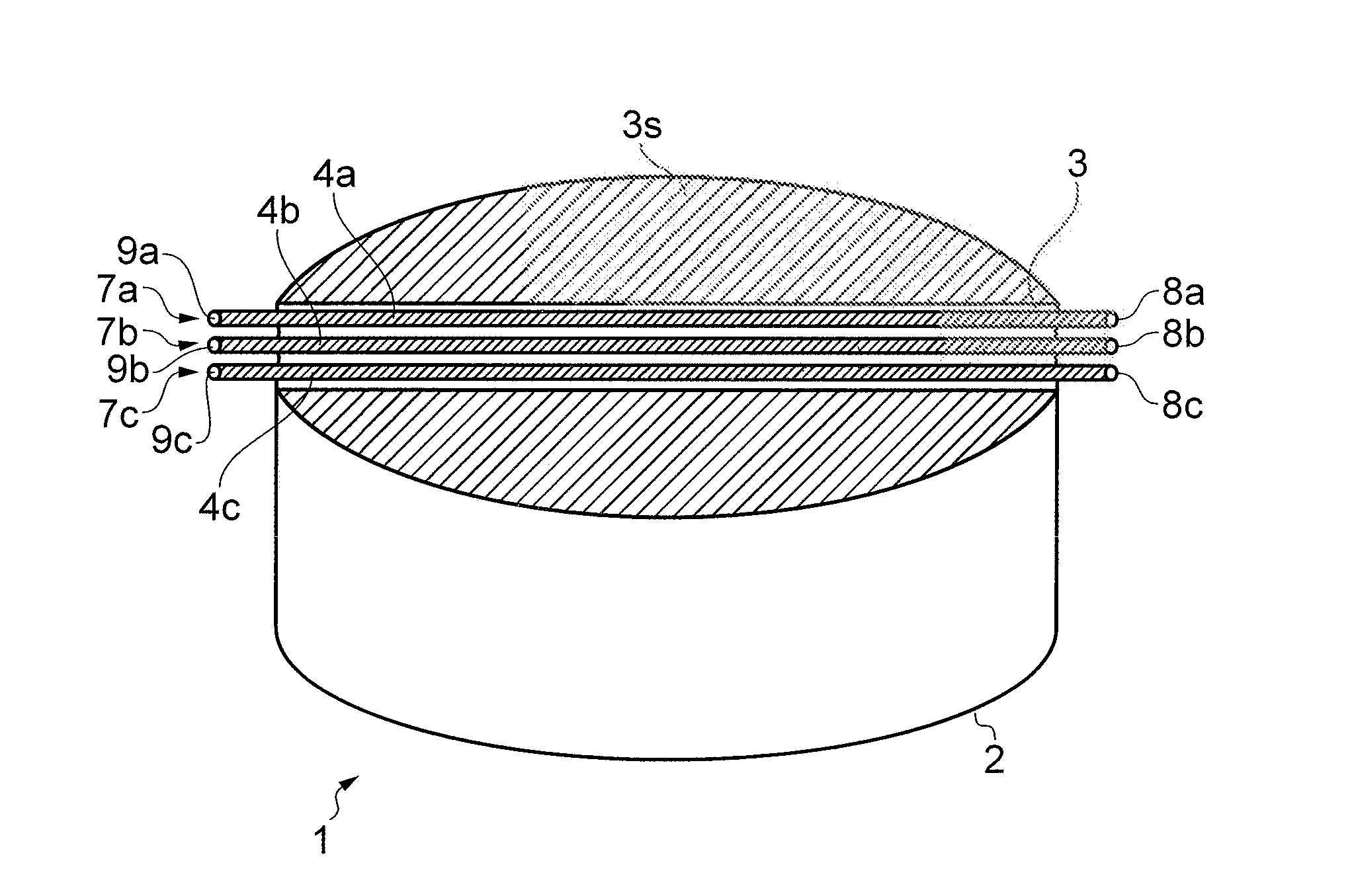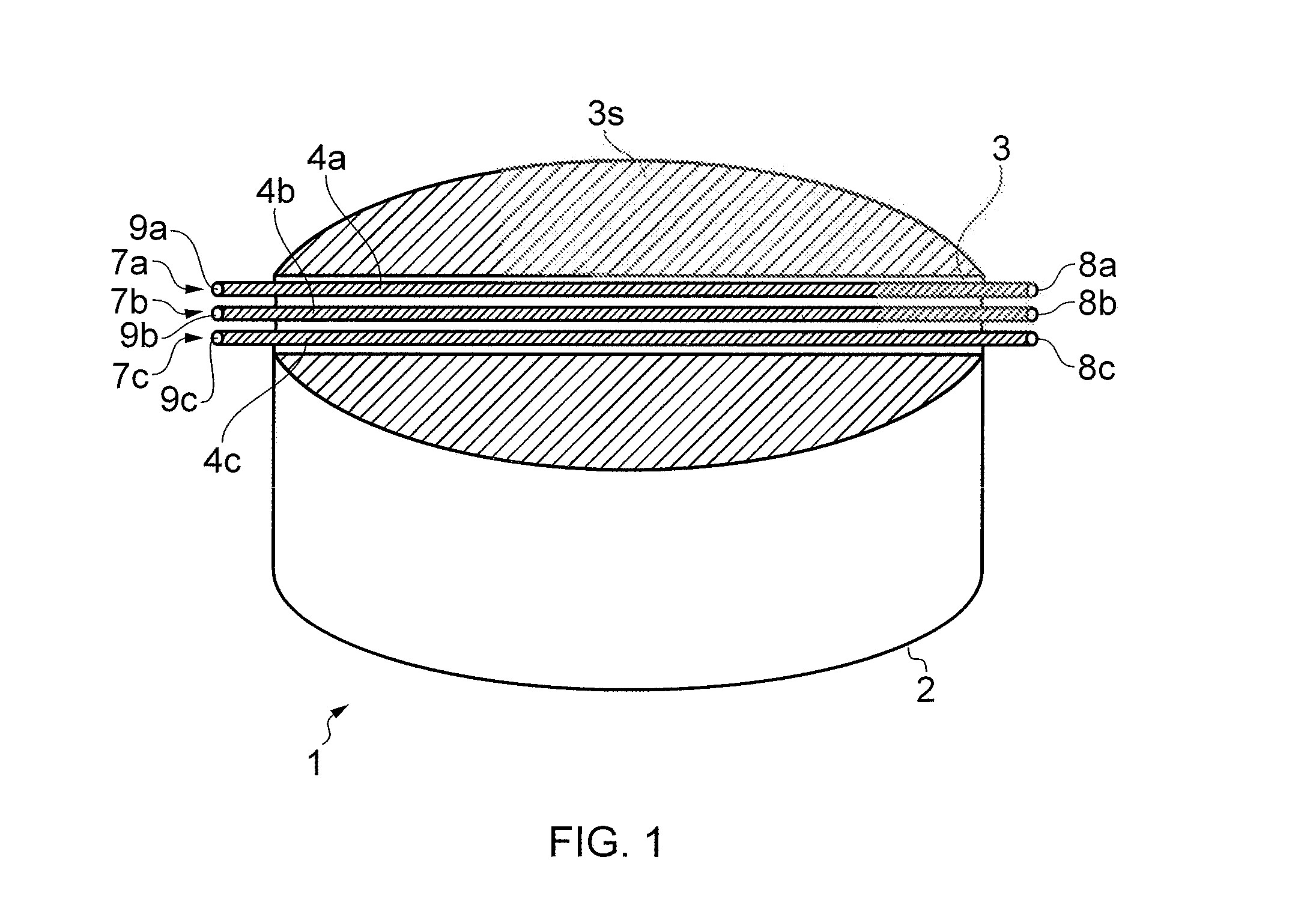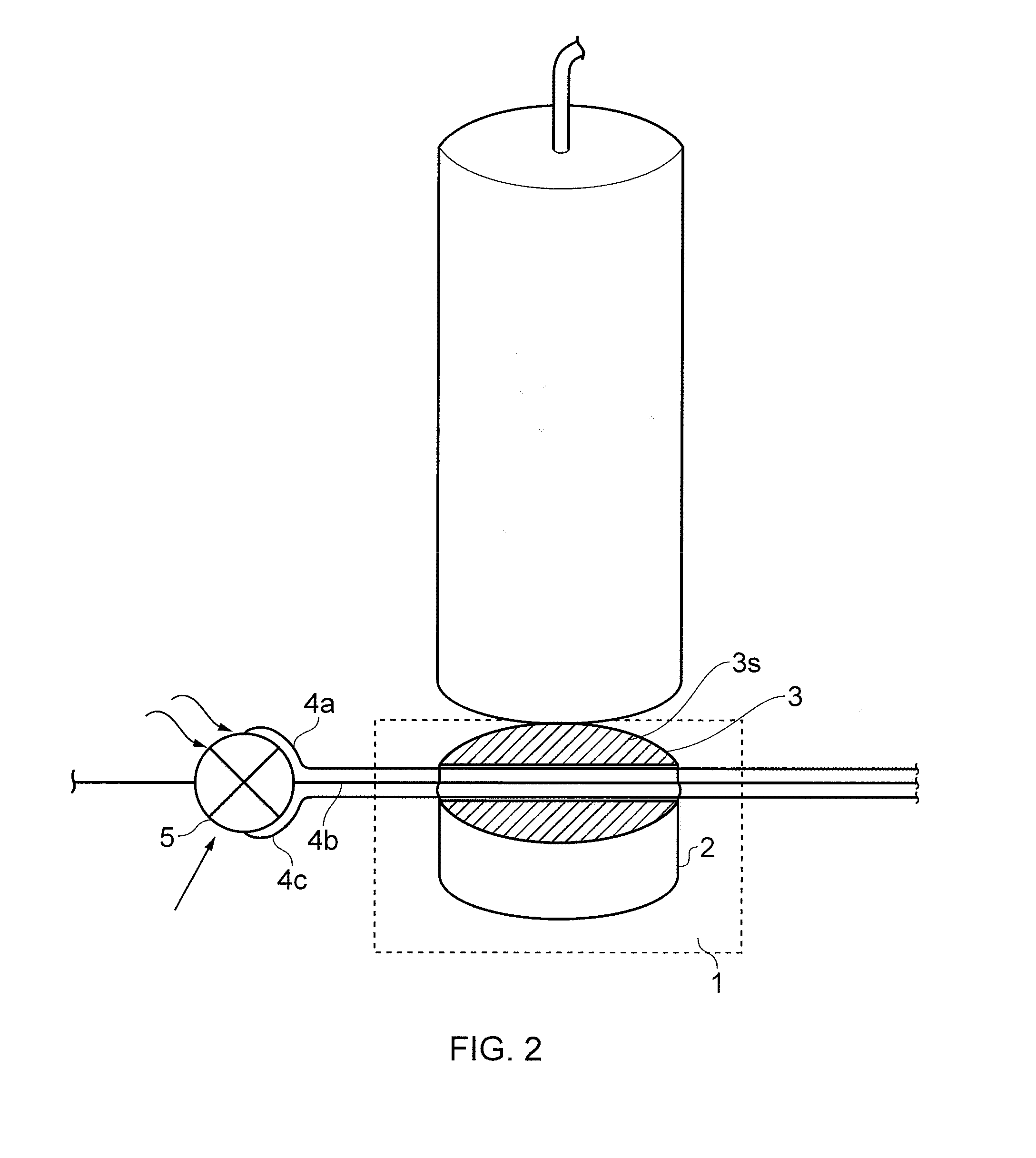Flow cell for radiation detector
- Summary
- Abstract
- Description
- Claims
- Application Information
AI Technical Summary
Benefits of technology
Problems solved by technology
Method used
Image
Examples
example 1
re of a Flow Cell
[0075]As illustrated in FIG. 5, a channel 3 was etched into the flat surface of a circular plexiglass block. Three lengths of PEEK tubing were positioned within the channel, with enough tubing to attach to the outflow from the UV detector and enough tubing to reach waste collector. The plexiglass mounting was chosen to protect the surface of the radio-detector crystal from any contact with the tubing as this could damage the crystal.
[0076]The exposed diameter of the crystal (through its lead shielding) was ca. 2 cm. This was taken as the length of each piece of tubing within the detector. However, since the mounting was plexiglass, some of the tubing at the inlet and outlet may have contributed to the signal. Since this is constant for all tubings, the ratio of the cell volumes for the different ID tubing remains constant and interpretation of the results the same. The three tubings were sent individually to the waste container.
example 2
[0077]Investigation of the linearity of the detector was performed by injection of [18F]Fluoride. The largest detector volume (Green PEEK tubing: 9.2 μL) and the smallest detector volume (Red PEEK tubing: 0.25 μL) were studied. The cell volumes were switched manually by simply switching the inlet tubing. This could be automated (and operated within a chromatography data system, such as Chromeleon) by using a switching valve. The plot (FIG. 6) shows how the detector slope is directly proportional to the flow cell volume.
example 3
n of Detector Sensitivity
[0078]For detector sensitivity, a preparation of the PET tracer 18F-flutametamol (prepared according to the method set out by Nelissen et al 2009 J Nuc Med; 50(8): 1251-1259) was analysed. The injection volume was altered so that the on-column activity was the same for all three detector volumes studied. Injection volumes were 20, 25 and 35 μL for RED (0.25 μl PEEK tubing), ORANGE (4.0 μl PEEK tubing) and GREEN (9.2 μl PEEK tubing) tubings, respectively (in that order). The volumes were adjusted, allowing for sample decay, to ensure that approximately the same on column activity was analysed. The total radiodetector signal (total peak areas) was found to be directly proportional to the flow cell volume (FIG. 7a). The sensitivty of the radiodetector for the detection of radio impurities was improved as the radiodetector volume was increased (FIG. 7b).
PUM
 Login to View More
Login to View More Abstract
Description
Claims
Application Information
 Login to View More
Login to View More - R&D
- Intellectual Property
- Life Sciences
- Materials
- Tech Scout
- Unparalleled Data Quality
- Higher Quality Content
- 60% Fewer Hallucinations
Browse by: Latest US Patents, China's latest patents, Technical Efficacy Thesaurus, Application Domain, Technology Topic, Popular Technical Reports.
© 2025 PatSnap. All rights reserved.Legal|Privacy policy|Modern Slavery Act Transparency Statement|Sitemap|About US| Contact US: help@patsnap.com



